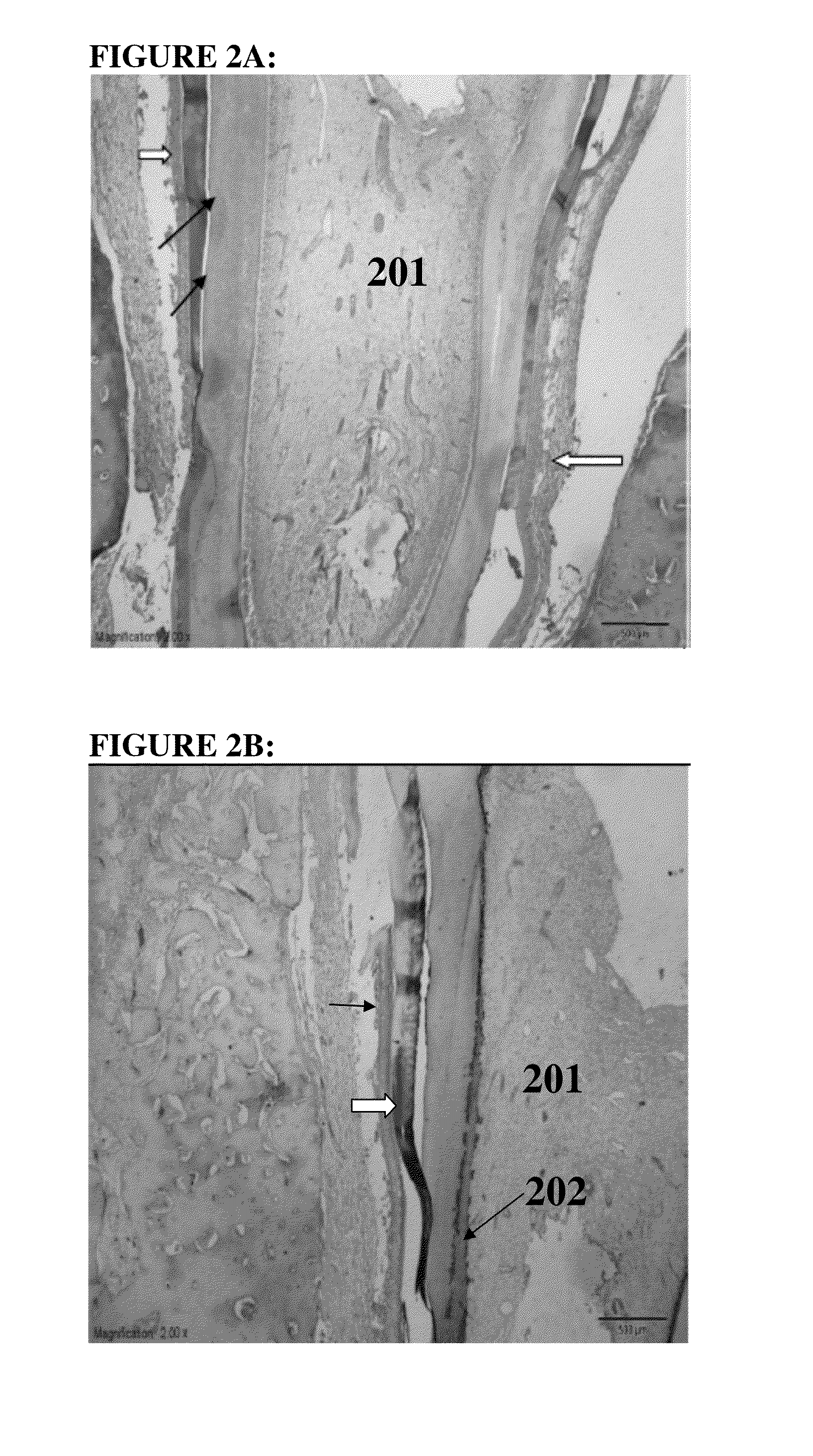Regeneration of ameloblast cells and dental enamel in vivo
a technology of ameloblast cells and dental enamel, which is applied in the field of restoration dentistry and treating dental conditions, can solve the problems of enamel being susceptible to other destructive forces, unable to regenerate, and unable to fully recover,
- Summary
- Abstract
- Description
- Claims
- Application Information
AI Technical Summary
Benefits of technology
Problems solved by technology
Method used
Image
Examples
example 1
Experimental Animals
[0064]All vertebrate animal studies were done after approval of the experimental procedures by an institutional review board for the safety and protection of vertebrate animals. A total of 240 root canals from 120 mandibular and maxillary premolars of twenty-four, 6-month old mongrel dogs were used.
example 2
Recombinant Amelogenin Protein
[0065]Expression and purification of recombinant amelogenin was done using a polyhistidine amino-terminal tag. Expression vector pQE30 (QIAGEN Inc., Valencia, Calif.) was used as previously described by (Moradian-Oldak J, et al., “Self-assembly Properties of Recombinant Engineered Amelogenin Proteins Analyzed by Dynamic Light Scattering and Atomic Force Microscopy,”J Struct Biol 131(1):27-37 (2000), which is hereby incorporated by reference in its entirety.) Recombinant histidine tagged murine amelogenin (rp(H)M180) that is identical to the previously described recombinant mouse amelogenin (rM179) (Moradian-Oldak J, et al., “Self-assembly Properties of Recombinant Engineered Amelogenin Proteins Analyzed by Dynamic Light Scattering and Atomic Force Microscopy,”J Struct Biol 131(1):27-37 (2000), which is hereby incorporated by reference in its entirety) was used. An amino-terminal histidine tag peptide was added and used for affinity purification of the p...
example 3
Apexification
[0066]Apexification treatment was performed in the premolar teeth of young permanent teeth. The recombinant mouse amelogenin protein (rp(H)M180), which is 180 amino acids in length, was used for apexification in experimental animals. Apexification treatment was performed in the premolar teeth of young permanent teeth. After endodontic access and determination of canal length, pulp tissue was removed with K-files. Hedstrom files were introduced to the radiographic apex and used in a filing action to remove all remnants of the pulp tissue.
PUM
| Property | Measurement | Unit |
|---|---|---|
| Fraction | aaaaa | aaaaa |
| Fraction | aaaaa | aaaaa |
| Density | aaaaa | aaaaa |
Abstract
Description
Claims
Application Information
 Login to View More
Login to View More - R&D
- Intellectual Property
- Life Sciences
- Materials
- Tech Scout
- Unparalleled Data Quality
- Higher Quality Content
- 60% Fewer Hallucinations
Browse by: Latest US Patents, China's latest patents, Technical Efficacy Thesaurus, Application Domain, Technology Topic, Popular Technical Reports.
© 2025 PatSnap. All rights reserved.Legal|Privacy policy|Modern Slavery Act Transparency Statement|Sitemap|About US| Contact US: help@patsnap.com



